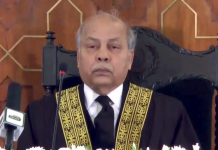
Despite growing tensions with India, Pakistan’s economy has shown a remarkable recovery, with annual inflation falling from over 40% to nearly zero, according to a report by Barron’s, a renowned US financial magazine. The publication described Pakistan’s turnaround as an “economic miracle,” highlighting the surge in Eurobonds maturing in 2031 — rising from 40 cents on the dollar to 80 cents. Meanwhile, the KSE-100 index has nearly tripled, showing growing investor confidence.
This economic revival follows a key agreement with the International Monetary Fund (IMF) signed in September. Under the deal, Pakistan secured a $7 billion Extended Fund Facility (EFF), of which over $2 billion has already been disbursed.
Barron’s noted that although the recent conflict with India might raise concerns, it is unlikely to derail Pakistan’s economic recovery. However, internal challenges such as political instability or governance issues could still pose risks.
Khalid Salami, a manager at Barings, said Pakistan has experienced many economic ups and downs. But this time, certain indicators suggest the recovery might be more sustainable than before.
Experts also credited bold policy steps like the State Bank of Pakistan increasing interest rates from 10% to 22%, which helped control inflation. Pakistan also received support through loans from China, Saudi Arabia, and the UAE, with GDP growth rebounding to 2.5%.
While Pakistan’s economy remains somewhat limited — with cotton, garments, and grain making up two-thirds of exports — it is beginning to diversify. IT exports have risen from nearly zero to $3 billion annually, though still far behind India’s $200 billion sector.







